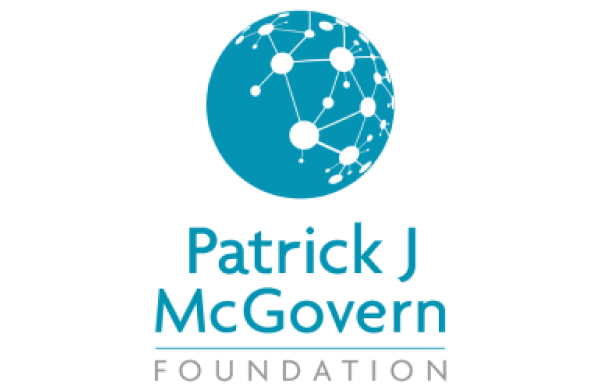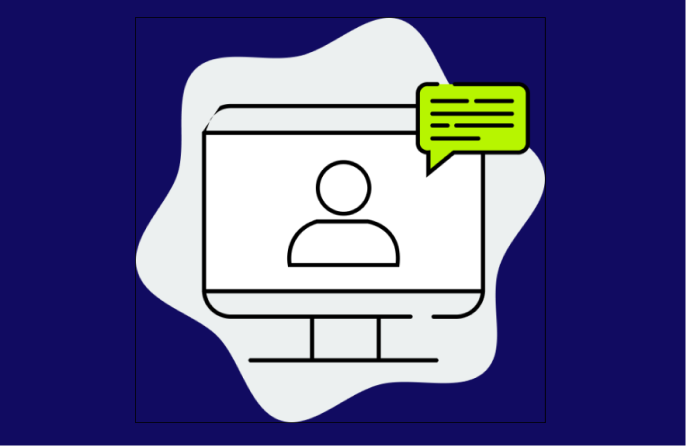AI for the Environment Challenge: How AI can Help Save the Planet
+400 Points
Addressing environmental sustainability and harnessing the power of AI are key challenges for today's youth. Our world's future depends on the participation of every young person. Past generations haven't quite managed to fix these issues – in fact, they've added to them – but could it be that teenagers hold the key to sparking change? Join the Patrick J. McGovern Foundation, and other companies, who care about using AI for the good of all.
In this Challenge, you'll explore the question:
What ideas do you have for using AI to address environmental issues?
Note: This Challenge is still available to complete to earn points and add to your resumes!! The prize money was awarded in the past to the following winners.


Skills you'll develop
- Problem Solving
- Communication
- Social Awareness
Create
You're ready to CREATE a prototype of your idea. This is what you'll use to explain your brilliant idea to the judges!
Choose ONE of the categories for your solution: product design, business concept, or marketing campaign. You can use the selection checklist to help you choose a category.

Create a Product
It's time to get creative and CREATE a prototype of your idea. This is what you'll use to explain your awesome solution! By the end of the Create phase, you should be able to:
Show your Design Brief
Explain how you created your prototype(s)
Share your feedback and demonstrate how you revised your prototype(s)
Be ready to create your video pitch
Understand the Create Phase for a Product
⏱️Time: 4-5 Hours (Week 3 of Challenge)
✏️Use the optional KNOtebook to record your ideas
💼 Mentor: Get feedback from a mentor, and others, on your prototype
🎯 Future Ready Skills: Problem-Solving, Collaboration
Product Design
In this phase, you'll create a concept for a new or improved product. Perhaps an app? A game? An everyday item?
Meet a Product Professional
Yay! You’re going to create a new product! First, let’s meet someone who creates new products.
A Great Product
Consider what makes a product great. Play the video to explore the Five Levels of the Product Pyramid to understand some of the characteristics.
Product Planning: A Design Brief
Before you start designing, it's helpful to do a bit of planning. A Design Brief helps you know where you’re headed. Learn about creating a design brief by reviewing each slide in the following presentation.
You may wish to use this Google Doc Design Brief, which is also in your KNOtebook.
Prototyping
Prototyping Example
Prototyping is a process of developing a new product through the physical representation of an idea. Prototypes come in all sizes and shapes, and the type of prototype you create will depend on what you’re trying to learn about your idea and what stage you are in of the process. Check out this fun video to see an example.
Prototyping is an iterative process and involves the following:
Types of Prototypes
With a general plan in hand, you’re ready to make your ideas tangible with a prototype! Designing a new product involves an iterative process, so don’t get too attached to your ideas - they may change - several times!
There are a lot of ways to prototype. Here are some you might consider. Flip the cards to learn about each.

Paper Prototype
Paper Prototype
Paper prototypes might be sketches and diagrams drawn quickly on a napkin or using a ruler and pen, but you don’t need to be an artist! A paper prototype is useful at the beginning of the process of conceptualizing a new product, enabling you to create multiple versions of your idea quickly.
Storyboard/Wireframe
Storyboard/Wireframe
Storyboards can communicate a concept by visualizing user interactions and telling a story. A wireframe is a storyboard for an app or website, and is useful for developing the navigation, structure, and placement of content. Wireframes can also be clickable, linking several static wireframes.
Role Play
Role Play
Role plays are useful for certain ideas, like you saw in the example video. Some designers are now also using virtual or augmented reality to prototype their ideas as a “walk through” experience.
Digital Prototype
Digital Prototype
Digital prototypes are computer-aided creations of a design, used to simulate and communicate designs. Digital prototypes have the benefit of the ability to be modified in real-time.
Physical Model
Physical Model
A prototype model can be made with anything from Legos to clay to wood to craft paper to a 3D-printed model. It doesn't need to have working parts—it just gives a rough idea of the design. Models work well for creating scaled concepts before producing something on a large-scale.
Working Model
Working Model
A working model prototype allows you to test the idea of a product to see if it actually functions the way you intended. This is useful for mechanized inventions or other designs with features that need to move or fit a certain way.Prototyping Tools
Using your Design Brief as a guide and your selected materials, determine which part of your product you’d like to prototype first and how you’d like to prototype, then start creating! Consider using any of the following tools:
Building materials: Great for prototyping processes, infrastructures, and work flows and just fun for everyone
Recyclables: Take something apart and use the parts for your prototype or dig into your recycling bin and see what you can use.
Video: A short and scrappy video can go a long way to communicate anything
Paper, cardboard: Sketching, drawing, diagramming, building

Digital Prototoyping Tools
Testing & Feedback
Now that you have your first prototype, it's time to share it and get feedback so that you can improve it.
Testing Plan
Take a look at a video of an example of creating a testing plan to get feedback.
Testing Suggestions
Getting Feedback
Consider using any of the following methods to structure and organize your feedback-gathering process. Select the plus signs.
Iterative Process
Iterating
After you get feedback, it’s time to make changes to your prototype or prototype another part of your product. Remember, the goal is not for your prototypes to be universally loved. The goal is to get as much feedback as you can to help you make your concept better. Continue to prototype, test, and iterate as much as you can, until you are satisfied with your prototype. This may be a multi-day process and is not to be rushed.


Mentor Moment
Get feedback from a professional who will be judging your project!
Consider how you will test and get feedback from a mentor who may be reviewing your prototype online and giving written feedback. Depending on what you create as prototypes, you could scan, take a photo, or capture video to share and get feedback. You may want to use the “I Like, I Wish, What If...” or the grid method.
Get feedback on your prototype now!
PRO Criteria
Continue to prototype, test, and iterate, as time allows and you feel happy with your final prototype.
Make sure your prototype demonstrates that your idea is:
Purposeful: Addresses the problem
Results: Will have an impact
Original: Is unique from everything that already exists or builds on something in a new way

Next Steps
Ready to Move On?
Do you feel prepared to create your video pitch? Can you show and explain the following. If so, great for you! The hard part is over now you get to share your idea! Flip the cards to see if you're ready to move on to "Pitch."

Prototype Plan
Prototype Plan
How did you plan your prototype? Share and explain your plan with someone. Did you use it to guide your process? Did you change it?
Prototype Creation
Prototype Creation
How did you create your prototype? What materials did you use? What was challenging? How did you overcome those challenges? Show the different prototypes that you created.
Prototype Feedback
Prototype Feedback
How did you get feedback on your prototype? What method(s) did you use? How useful was the feedback? What kind of revisions did you make based on the feedback?




